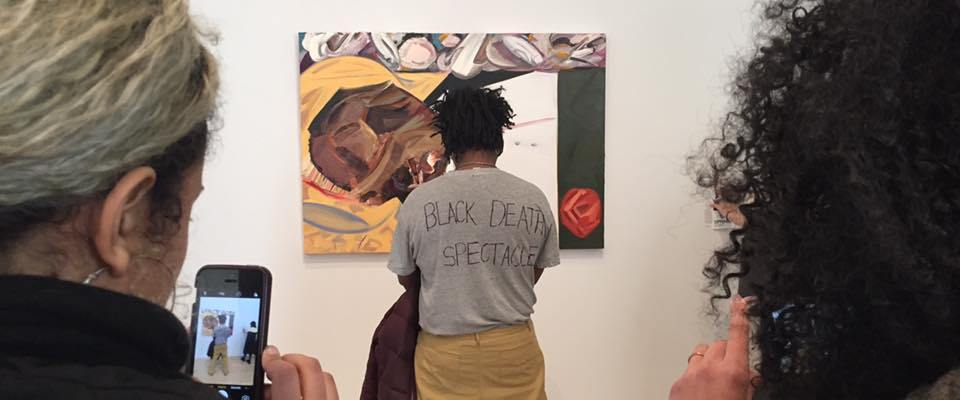Controversy at The Whitney
By Sofija Chroneos
Voices gives Boston University students a chance to reflect on how our identities shape our narratives. Ultimately, we know that identities mold our social experiences and perspectives. In Voices, we aim to engage in empathetic conversations to grow compassion and understanding within our community. Sometimes, these conversations unfold as more complex and layered than either side anticipates.
Artist Dana Schutz’ painting Open Casket has recently garnered explosive attention from the art community. Shown at the The Whitney Museum of American Art, the work depicts the abstracted corpse of 14-year-old Emmett Till, whose brutal 1955 lynching catalyzed the Civil Rights Movement. Till’s mother decided to leave his casket open at his funeral to call attention to both the barbarism of his murder and the racism entrenched within American society. Schutz, who is Caucasian, loosely based the painting off of a widely reproduced photograph of young Till’s corpse.
In a recent interview with The New Yorker, Schutz emphasized that her intention was to funnel the event’s emotionality through her work. Schutz has also said that her approach derived from her own maternal perspective and empathy for how Emmett’s mother must have felt.
Critics demanded that the work be taken down or even destroyed, accused Schutz of using African American pain as raw artistic material. African American artist Parker Bright stood in front of the work to block it from view at the public opening, wearing a t-shirt with “Black Death Spectacle” written on the back. Schutz was further criticized for “using black suffering for profit and fun” by British artist Hannah Black.

The points of view of these artists and all others who opposed the work’s morality is justifiable. From their perspective, the suffering of black men, women and children in American history is not Schutz’ narrative to express.
Essentially, the controversy regarding Dana Schutz’ Open Casket poses crucial questions over whether there should be limits on artistic expression. Despite Schutz intentions being rooted in compassion, the ethics of producing work that crosses charged and stringent racial tensions is wrought with unease. The painting of Emmett’s body struck a highly personal chord for the black community, producing dizzying debate over whether art which so radically offends should be taken down.
In Voices, we firmly believe in empathy across identities. The Dana Schutz controversy shows us how necessary conversations about race are. Taking the time to understand new perspectives will help us respect identities that are not our own, and only then can we compassionately address social issues.
